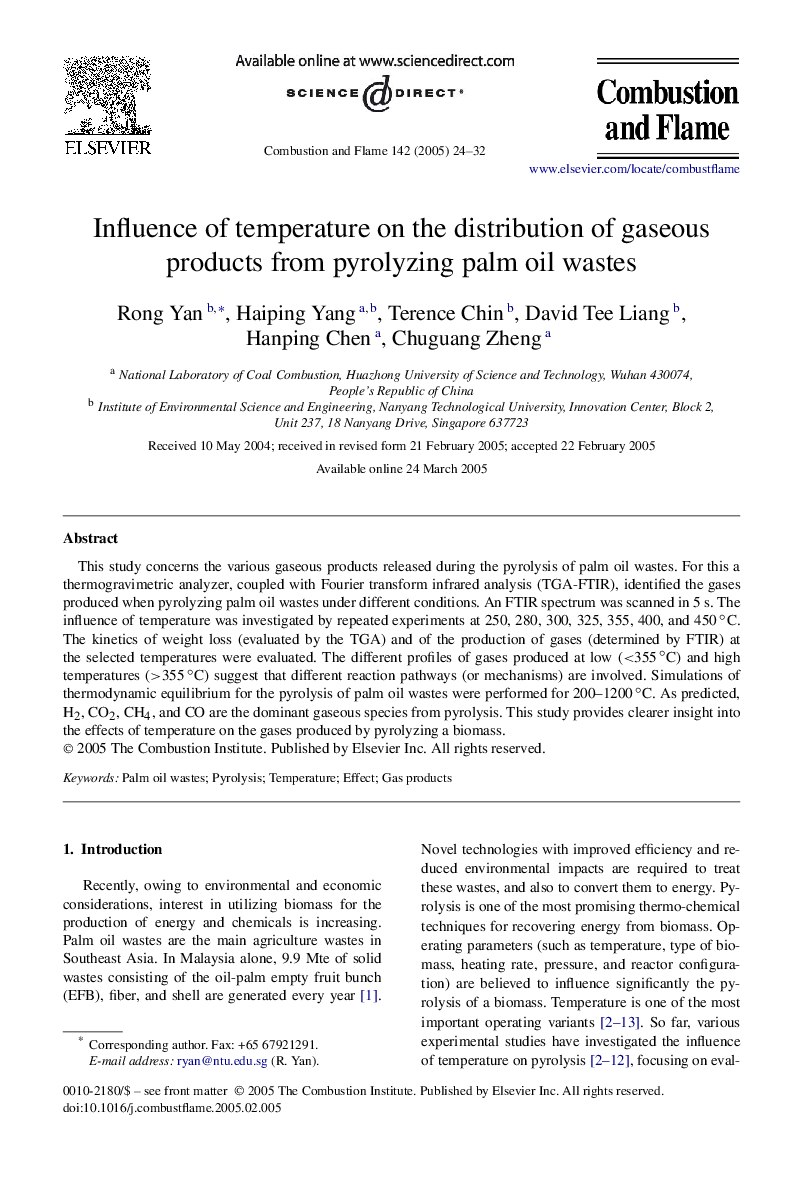| Article ID | Journal | Published Year | Pages | File Type |
|---|---|---|---|---|
| 9624502 | Combustion and Flame | 2005 | 9 Pages |
Abstract
This study concerns the various gaseous products released during the pyrolysis of palm oil wastes. For this a thermogravimetric analyzer, coupled with Fourier transform infrared analysis (TGA-FTIR), identified the gases produced when pyrolyzing palm oil wastes under different conditions. An FTIR spectrum was scanned in 5 s. The influence of temperature was investigated by repeated experiments at 250, 280, 300, 325, 355, 400, and 450â°C. The kinetics of weight loss (evaluated by the TGA) and of the production of gases (determined by FTIR) at the selected temperatures were evaluated. The different profiles of gases produced at low (<355â°C) and high temperatures (>355â°C) suggest that different reaction pathways (or mechanisms) are involved. Simulations of thermodynamic equilibrium for the pyrolysis of palm oil wastes were performed for 200-1200â°C. As predicted, H2, CO2, CH4, and CO are the dominant gaseous species from pyrolysis. This study provides clearer insight into the effects of temperature on the gases produced by pyrolyzing a biomass.
Related Topics
Physical Sciences and Engineering
Chemical Engineering
Chemical Engineering (General)
Authors
Rong Yan, Haiping Yang, Terence Chin, David Tee Liang, Hanping Chen, Chuguang Zheng,
